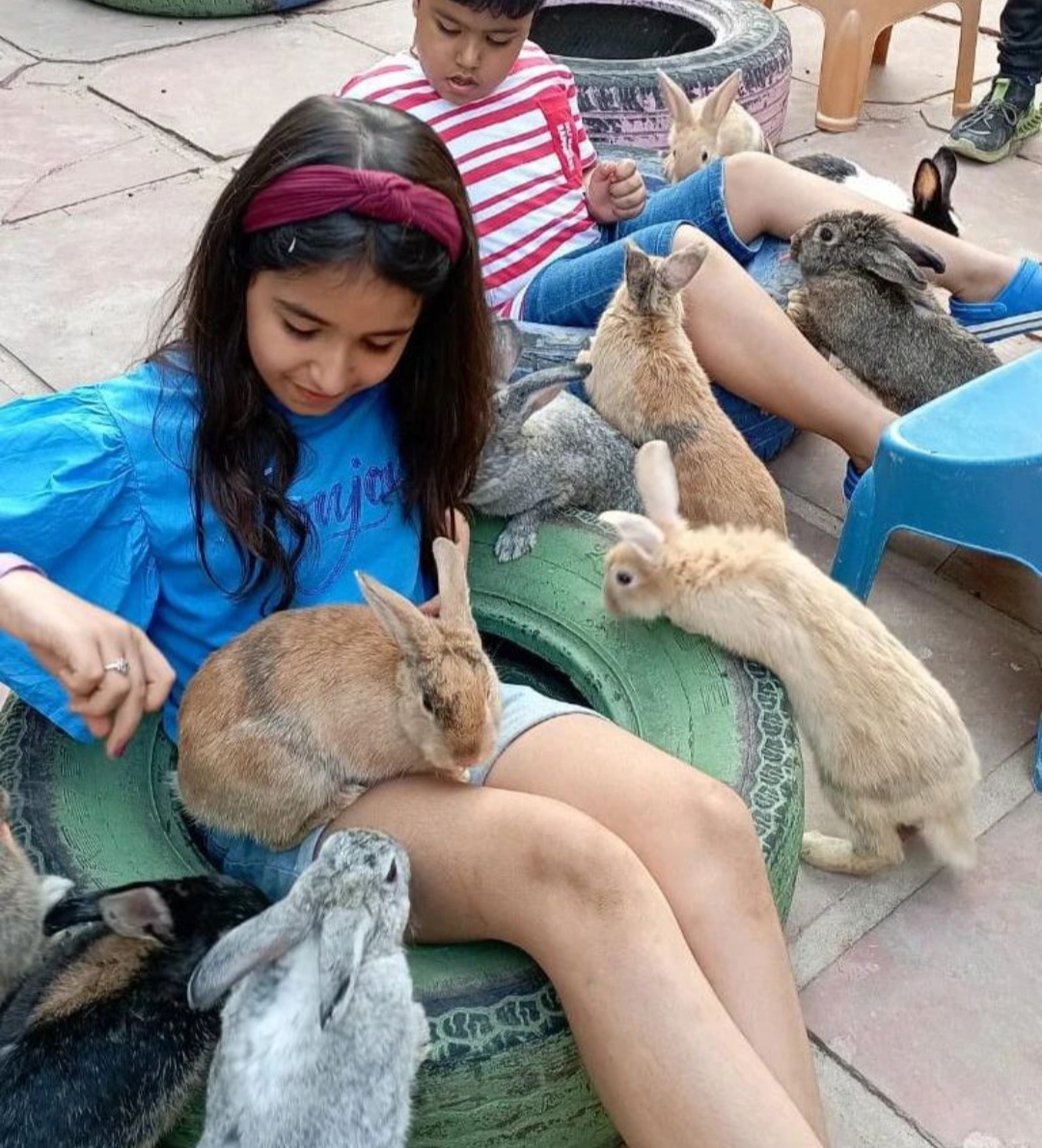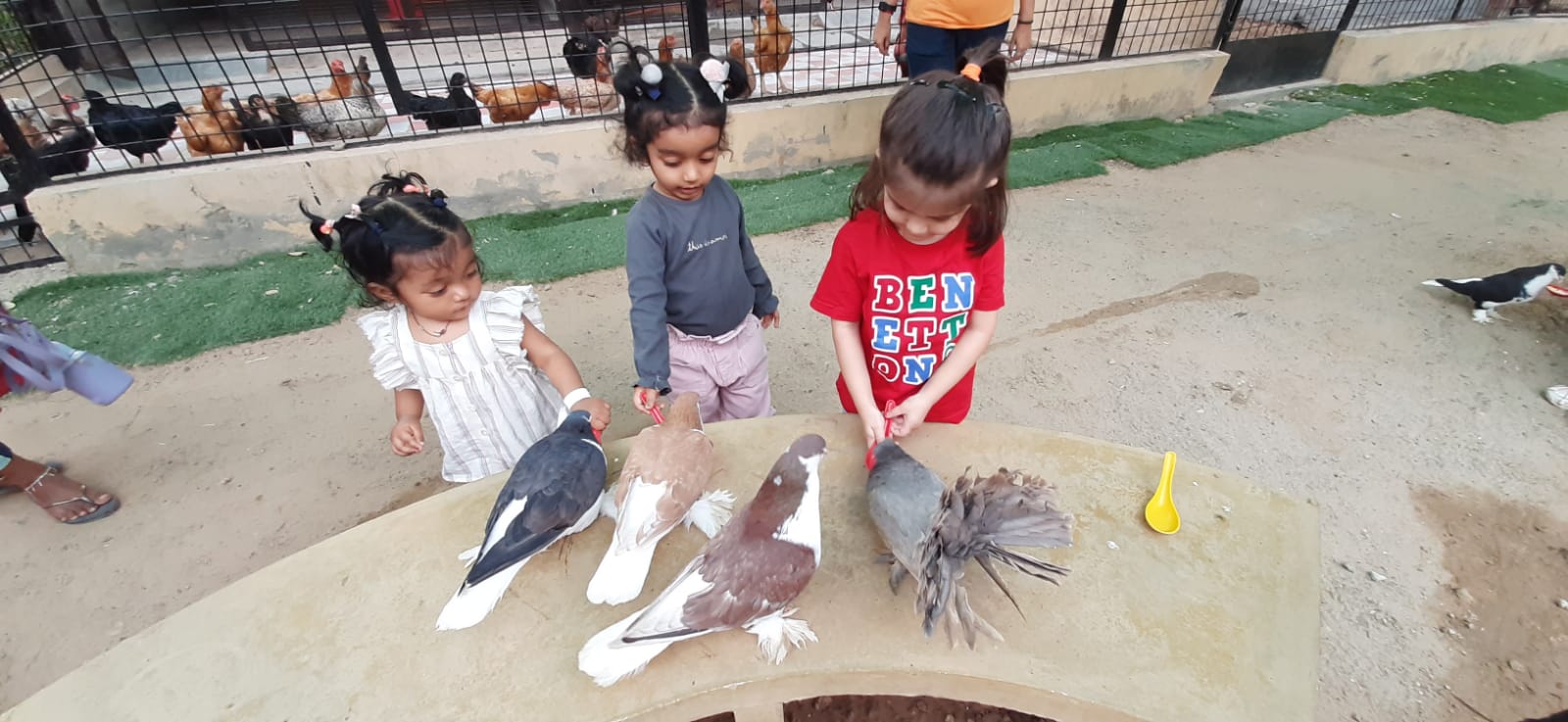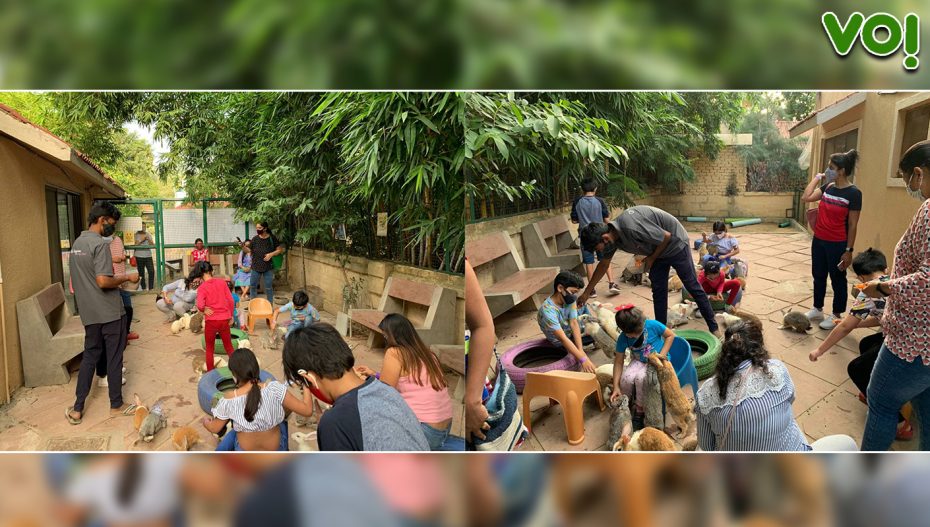This 2000-square-feet area in Ghuma, Ahmedabad, is a very special place. It’s a place where rescued animals are taken care of lovingly for life. It’s also a place where children visit to interact with these ‘companion animals’ – donkeys, pigs, rabbits, guinea pigs, mice, goats, sheep, chicken, turkey, ducks, geese, pigeons – nearly 20 species of animals under one roof.
There are a few exotic animals too – hedgehogs, a beautiful cockatoo, iguanas, and emus. Called the Animal Sanctuary, the organization is supported by a charity called Qi to Happiness Foundation.
The objectives of Animal Sanctuary are ‘to care for rescued animals and enable children to develop empathy and kindness towards animals’, says Rahul Sehgal, trustee of the sanctuary, who has been involved in animal welfare activities for 22 years.

“Animals are an amazing way to teach your child empathy, kindness, and boost their self-esteem. On visits abroad I would see at children’s birthday parties that animals would be allowed to roam free and mingle with the children. In India, children usually get to interact with animals in cages when they visit zoos. We wanted to create an environment where children could touch, feed and pet animals,” he explains.

A sanctuary called ‘Five Acres of Kindness’ was established in 2009 on land leased from the municipal corporation. The animals were shifted to Ghuma in 2018. “We have around 200 animals in all. We have one-hour guided tours of the sanctuary where visitors meet every animal (who wishes to socialize). Visitors are given information about the animals – habitat, background, lifespan, food habits, what the animal is frightened of, how it spends time in the sanctuary, and funny anecdotes are related. Most of our animals are named and children keep visiting us and become attached to specific animals,” explains Rahul.

“We do not adopt animals from rescue agencies unless we have space. We do not want overcrowding which will not be good for the health and well-being of the animals,” says Akanksha Mukherjee, curator of the sanctuary, who has been a wildlife rescuer and rehabilitator for 20 years.
Her role is to see that the animals are healthy and happy. She supervises the nutritional requirements and ensures the animals are physically and mentally engaged so that they don’t get bored. She also oversees preventive care so that animals don’t get sick and makes the new animals get comfortable around people. In the summer heat, the animals are provided shade, fans, water-rich food and water in which electrolytes are added, she explains.

“Most of the rescued animals have been ill-treated and take time to trust humans. We have a team of six keepers and two educators and the condition for working in our sanctuary is having a love for animals and an understanding of their needs. We have a team of vets on call. Youngsters volunteer with us to help in the grooming of animals and the education aspect,” says Akanksha.
Dogs and cats are not part of the sanctuary as the other animals get frightened of them. Buddha, a 30-year-old mule was rescued after his owner, a tangawallah, had left him to die. Now, he is one of the friendliest and most popular animals in the sanctuary.
Essays, worksheets, art work and quizzes are part of the education module for schoolchildren planned now that schools have opened up. During the pandemic, the sanctuary conducted virtual tours reaching out to around 15,000 people across the country.
Animal Sanctuary seeks to help children develop a respect for animals and the environment, recognise the interdependence between humans and other living beings, and become compassionate changemakers. Truly, the need of the hour.












